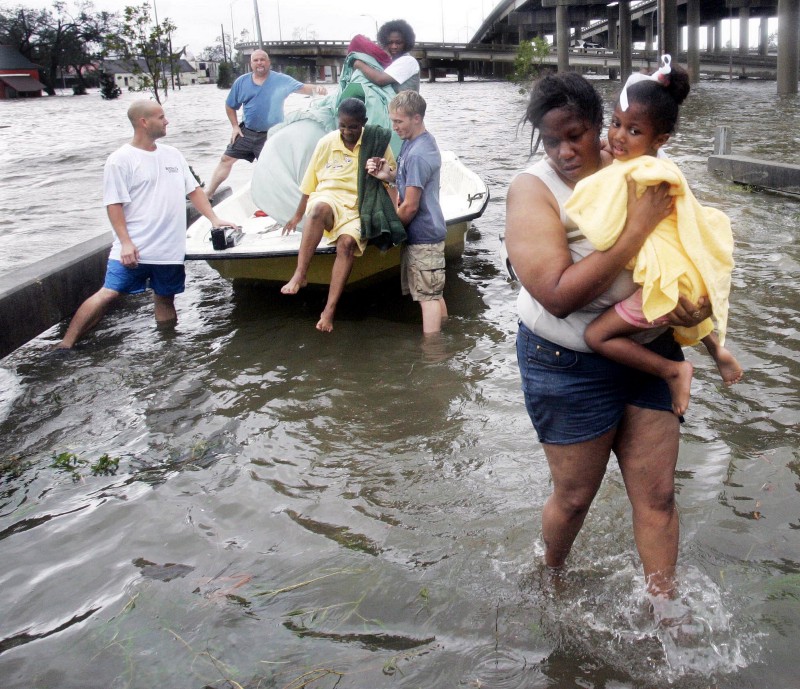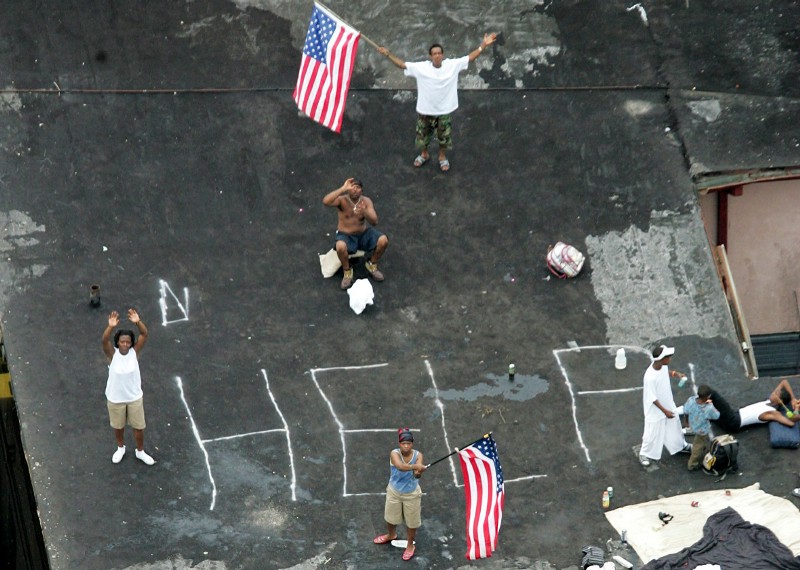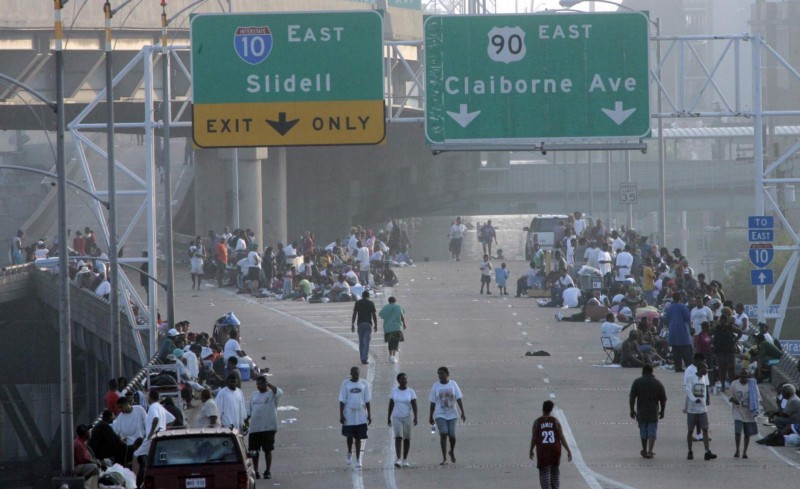A conversation with Parker Sternbergh, LCSW, on the work of connection and relationships in New Orleans after Hurricane Katrina
What does love look like for you? Are your relationships secure? These are some of the things that came up in conversation with Parker Sternbergh, LCSW, Director of the Porter-Cason Institute for the Family at Tulane, when we talked about the post-Katrina landscape of clinicians and community of people in New Orleans.
It’s August 29, 2019, the anniversary of the landfall of Hurricane Katrina. People are remembering. Specifically, bodily tissues are remembering. Drawing on the work of Bessel van der Kolk in his The Body Keeps The Score: Brain, Mind, and Body In the Healing of Trauma, we understand today that “trauma is not just an event that took place sometime in the past; it is also the imprint left by that experience on mind, brain, and body” (Bessel van der Kolk, 2014).
Unquestionably, the event of Hurricane Katrina and its aftermath had significant effects on the individuals, families, and collective orientation of an entire city. Here we will peer into these effects through the lens of conversation with Parker Sternbergh as she illuminates the theme of connection and relationship within the clinical community and community of clients after Hurricane Katrina. We will also consider connection as it relates to solutions in collective trauma and interpersonal trauma.

According to Sternbergh, Hurricane Katrina marked a time in the city of New Orleans in which people learned, “nobody came for us but us.” This learning makes sense as the community depended upon its members for direct support and meeting of basic needs at a time when basic needs were difficult to negotiate. What does this look like? Neighbors being interdependent upon one another for shelter, food, water, and safety.
Fast forward to 2019, and people are practicing what they’ve learned. For instance, several days before Hurricane Barry’s landfall on July 13, 2019, there was substantial flooding in parts of the city. Sternbergh shares her experience of a sense of communal interdependence just in her neighborhood on Camp Street where everyone was out on their porches during and after the rain. At this time, she shared food with a woman she’d never met before, and they’ve made plans to share food again soon. According to Sternbergh, “We know that connection is how we survived,” so we keep cultivating that. “That is the positive cycle.”
So in the midst of collective alarm and disillusionment, the community navigates solution through connection in the way of neighborly interdependence. What Sternbergh was interested in was how to address the alarm and disillusionment she met in the individuals and families that were seeking help.

Sternbergh recalls that upon the hit of Hurricane Katrina and post-Katrina, she and other clinicians in the New Orleans area saw an onslaught of families in crisis, namely in divorce and addiction. What Sternbergh saw specifically was an overwhelming need for solutions in practice with the affected families. Years before, Sternbergh had received training with Dr. Sue Johnson at the Ackerman Institute in New York in Emotionally Focused Couples and Family Therapy (EFT), a modality developed under funded peer-reviewed research and centered around addressing how people put together their emotional experience in the context of relationship.
In collaboration with Sue Johnson and colleagues, Sternbergh brought the much needed modality to New Orleans. George Fuller, a firefighter turned therapist, worked closely with Johnson and Sternbergh to address the need for training clinicians in EFT. He informed the approach to Hurricane Katrina with his experience as a firefighter during 9/11. Although these were two different populations affected by two different disasters, what Fuller saw in the affected families and individuals was the same. The common thread? A widespread pattern of emotional dysregulation in relationships and the need for solutions for families and individuals.

Introducing EFT to the clinical community in New Orleans meant dropping the modality into the lap of the Porter-Cason Institute for the Family at the Tulane School of Social Work. Porter-Cason provided the funding to get clinicians promptly certified in EFT. Following the initial set of trainings, there developed a core group of people, Sternbergh included, who were committed to growing its practice.
From that core group of EFT practitioners, study groups specific to EFT have sprung up in Baton Rouge, Lafayette, and Alexandria. Sternbergh notes that the goal is always to pull in more clinicians to train in EFT. She says of the growth of EFT among clinicians, “It is a community, like TPN is a community — only pre-TPN with no TPN.”
Building on the implementation of EFT post-Katrina, Parker’s work at Porter-Cason continues to serve the community of clients and clinicians in form of community projects, research, and training of master-level students to become therapists that are focused on addiction and the family.
The approach of the institute in treating addiction is that it is a symptom of other things going on in a person’s ecosystem in the form of interacting biopsychosocial processes, such as epigenetics or attachment injury. One of the Porter Cason’s community projects at Covenant House illustrates this paradigm around addiction. The project involves looking at the kids’ whole ecosystems while teaching them about the mind-body connection and skills that serve this connection, such as meditation, sleep, and other practices involved Dialectical Behavior Therapy.
Also through Sternbergh’s work at Porter-Cason, research takes place with a population of foster children in the form of focus groups. Some of the questions that focus groups ask the kids is, “If you are transitioning out of foster care, how would you design the system?” and “What is the most important thing for your success?” What they are finding from the data is that the most important thing, most often, for the kids in their eyes is a consistent caring adult.
Parker notes that the results of discussion in the focus groups “lines up with what we already know about our neurobiology — that we are hardwired for connection.” The goal of this work with the foster kids is to amass enough voices to find a pattern. The foster-care system is not set up to meet that neurobiological need in every kid, so the work at Porter-Cason is to document this need in a way that is patterned and traceable.
“Restoring relationships and community is central to restoring well-being” -Bessel van der Kolk, 2014.
Today it is true that people can become awash in responses of the sympathetic nervous system. When we are caught in fight-or-flight mode, our attention is “focused on fighting off unseen enemies, which leaves no room for nurture, care, and love. It means the mind is defending itself tirelessly, while closest bonds are threatened, along with our ability to imagine plan, play, learn, and pay attention to other’s needs” (Bessel van der Kolk, 2014).
It is also true that the doable work is to create the space so that people, ourselves included, can cultivate attentive practices in relationships. Drawing from the hope in how far we have come already, we can remember, especially today, to take care of those positive connections with self and others.
Keep up with the progress of TPN.Health! Subscribe to our mailing list.
Sign up today to start connecting with clinicians in Louisiana.
References:
Bessel van der Kolk (2014). The body keeps the score: Brain, mind, and body in the healing of trauma. Penguin Group: New York, New York.